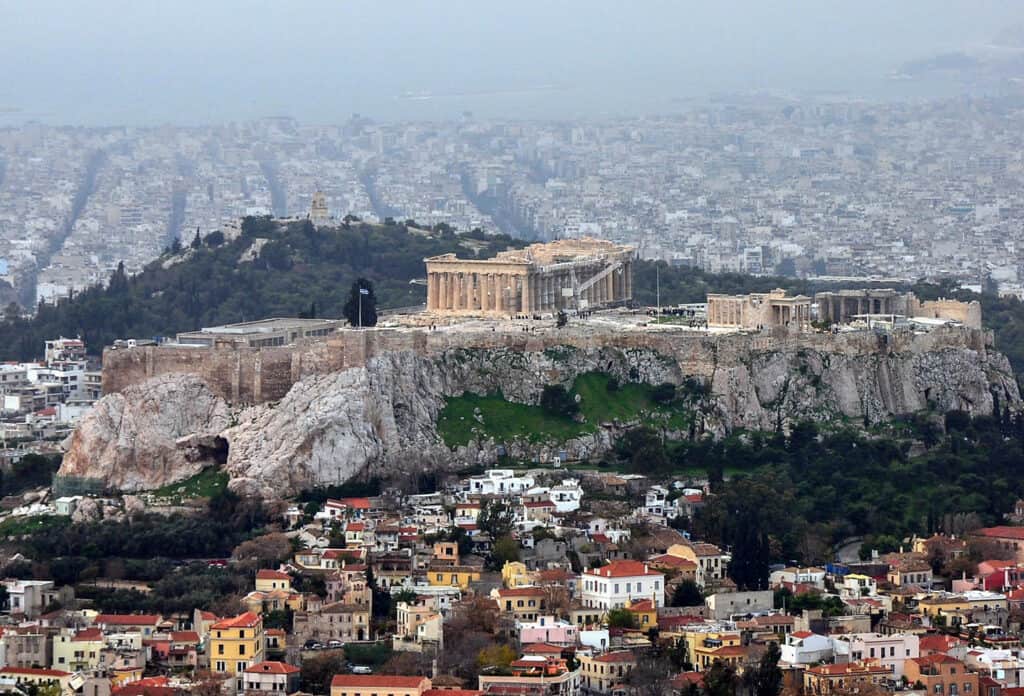

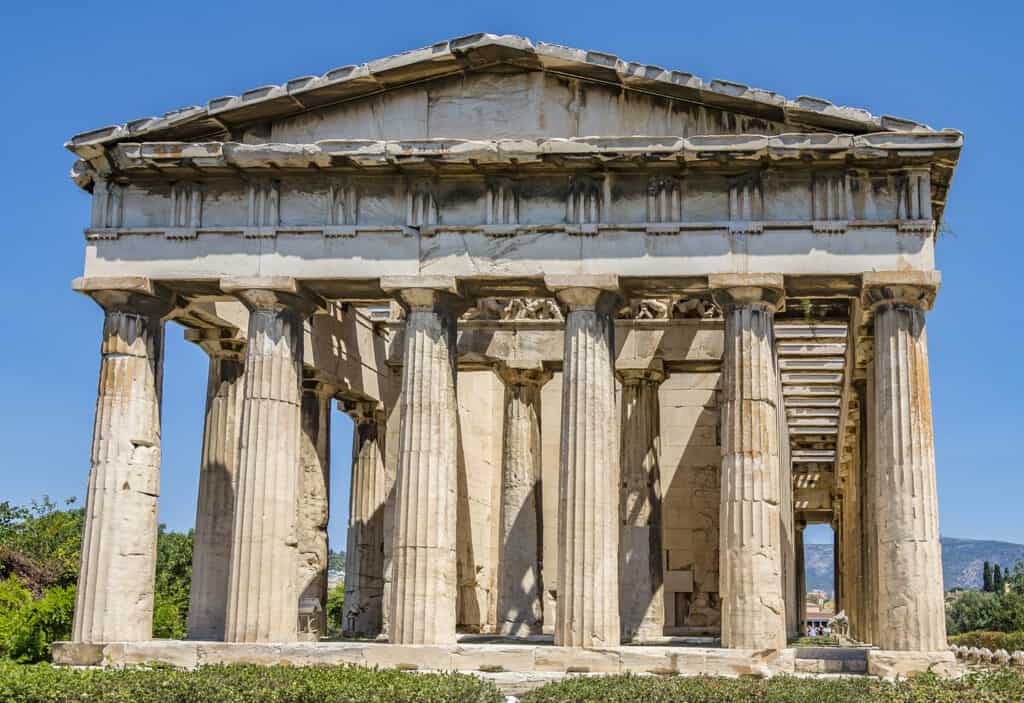

Discover the enduring legacy of Greek architecture, where ancient masterpieces and modern marvels converge in a mosaic of innovation and cultural richness. From the iconic Parthenon to the serene Metéora Monasteries, each structure tells a story of craftsmanship and creativity that spans millennia.
At Landmarks Architects, we are passionate about preserving and celebrating this legacy. We invite you on a journey through Greece’s architectural treasures.
In this article, uncover:
- The architectural principles that defined ancient Greek temples
- Iconic landmarks such as the Acropolis and the Palace of Knossos
- The evolution from Byzantine splendor to neoclassical elegance
- The charm of Greek island architecture and medieval monasteries
Prepare to be inspired as we investigate Greek architecture, a journey that promises to ignite your imagination and deepen your appreciation for timeless design. Join us on this exploration of history, innovation, and the artistry that continues to shape the architectural landscape today.
See Also Famous Buildings in Greece
Ancient Greek Architecture
Ancient Greek architecture is known for its iconic structures that have influenced architectural design for centuries. The architectural style of ancient Greece follows a trabeated or “post and lintel” form, consisting of upright beams (posts) supporting horizontal beams (lintels). The Classical Orders—Doric, Ionic, and Corinthian—developed during this era are still used in modern architecture.
Across millennia, these architectural principles have profoundly shaped building styles worldwide. The enduring remnants of ancient Greek cities continue to inspire admiration for their architectural ruins, preserving the legacy of their cultural and historical achievements.
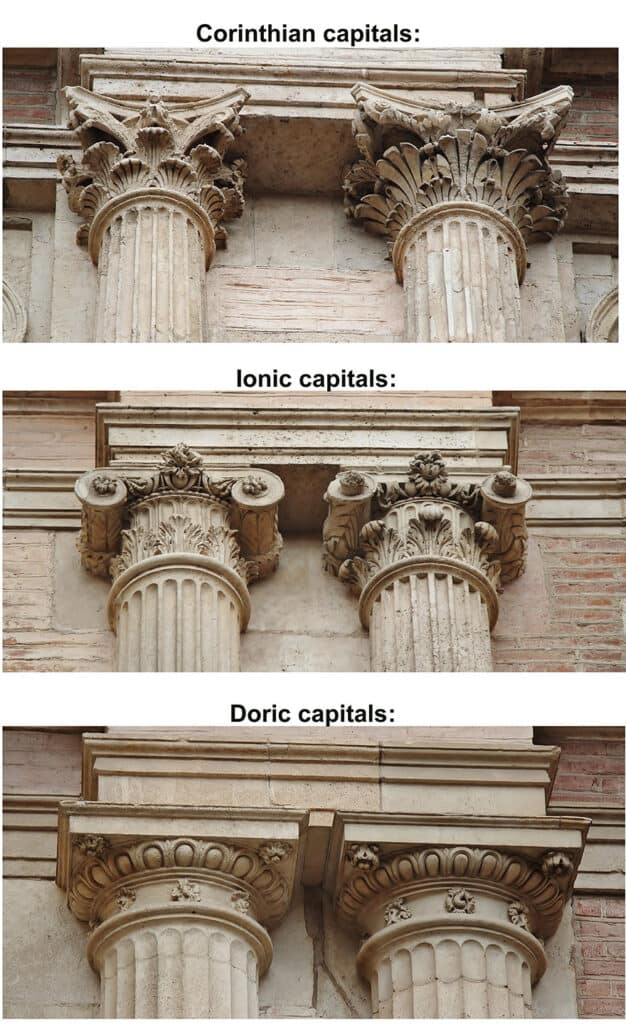

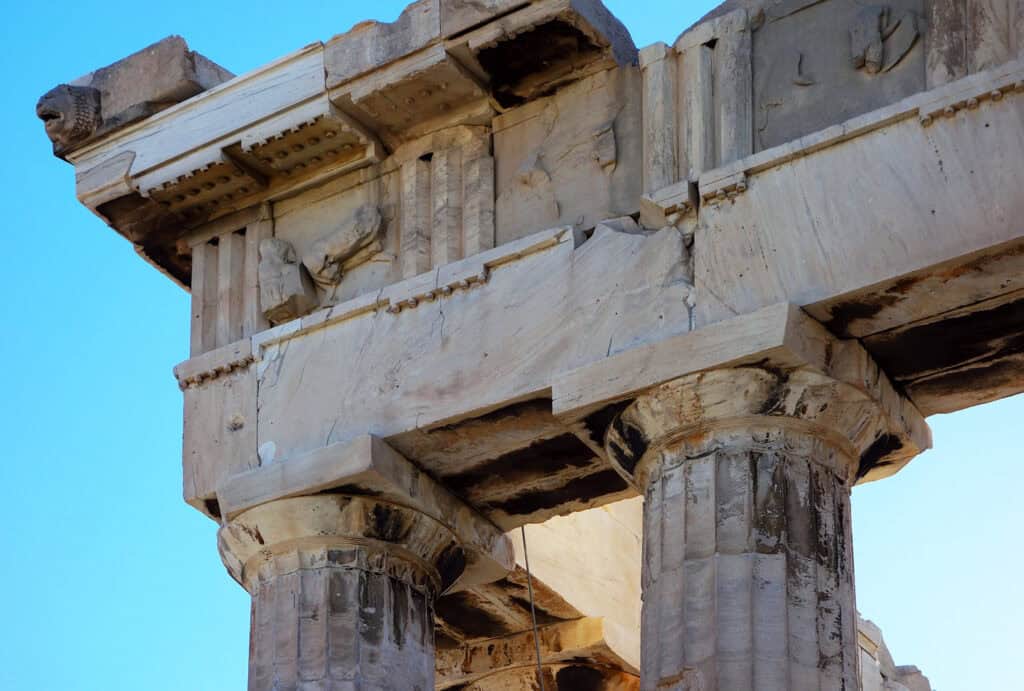
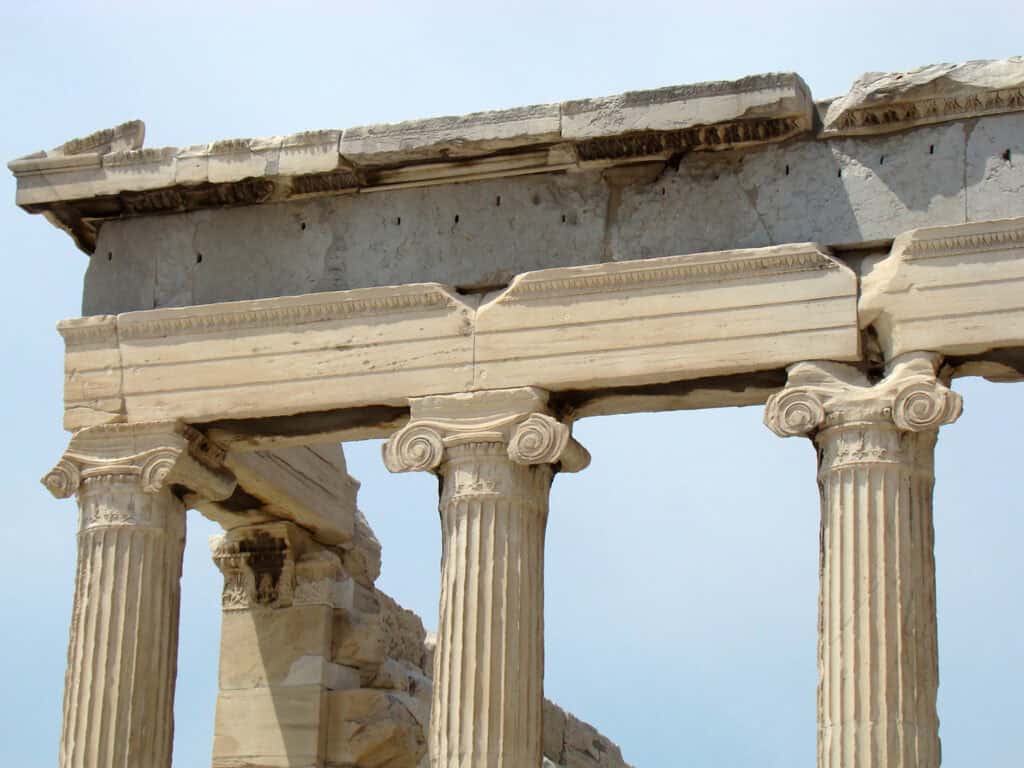
1. The Parthenon
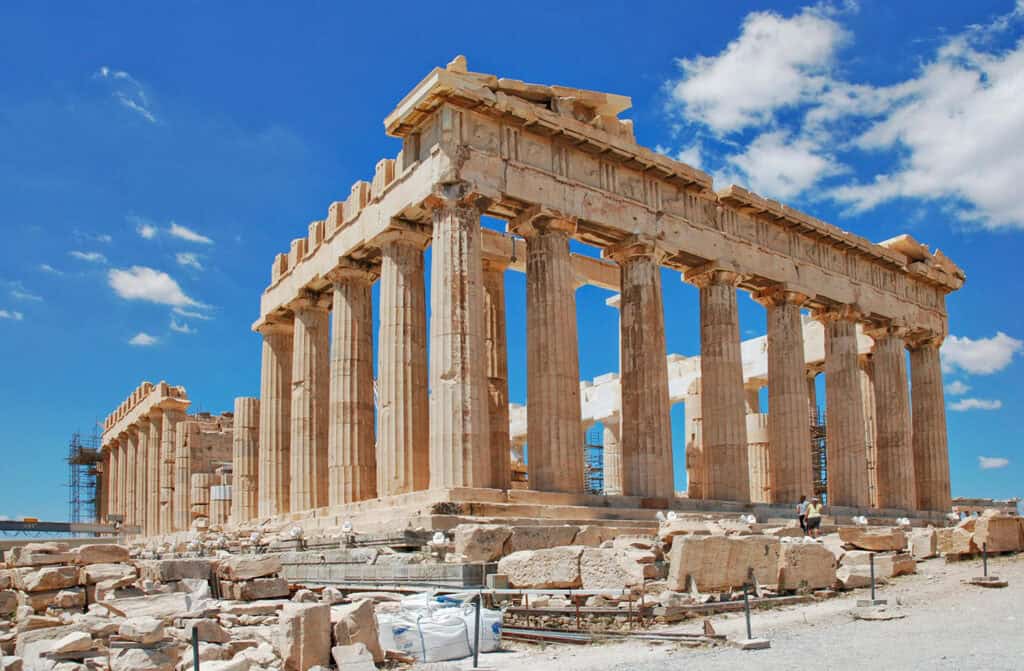
The Parthenon, situated on the Acropolis in Athens, Greece, stands as the epitome of ancient Greek architecture. Constructed in the mid-5th century BCE, its primary purpose was to enshrine the colossal statue of the goddess Athena and showcase the splendor of Athens to the world. This Doric temple had 46 outer columns and 23 inner columns in total, each column featuring 20 flutes (a flute is a concave shaft carved into the column form).
2. Temple of Hephaestus

The Temple of Hephaestus, also known as the Hephaisteion, is located in the ancient Agora of Athens and is one of the most well-preserved ancient Greek temples. It was built in 450 BCE in the Doric order and was dedicated to the god of fire, Hephaestus. The temple is renowned for its impressive columns and intricate friezes.
The Hephaisteion | Temple of Hephaestus
3. Temple of Olympian Zeus
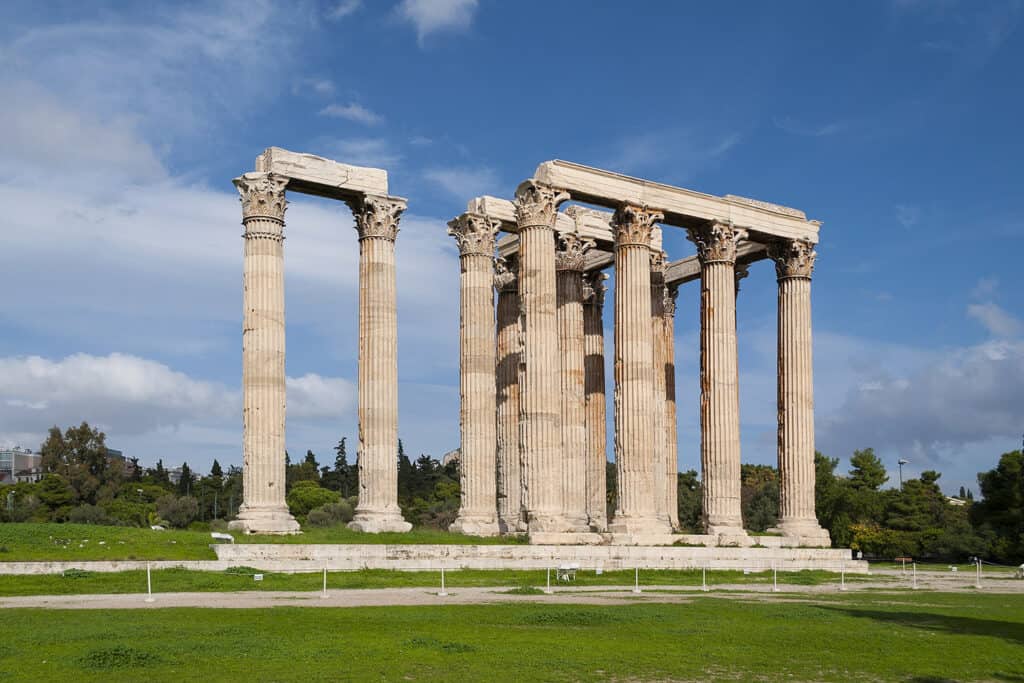
The Temple of Olympian Zeus, situated in Athens, was one of the largest temples in Greece. Construction began in the sixth century BCE and was completed in 131 CE. This grand structure boasted 104 marble Corinthian columns, each approximately 55 feet 9 inches (17 meters) tall and 6 feet 7 inches (2 meters) wide. Dedicated to Zeus, the king of the gods, the temple exemplifies the ancient Greek architectural grandeur and reverence for divine patronage.
4. The Erechtheion
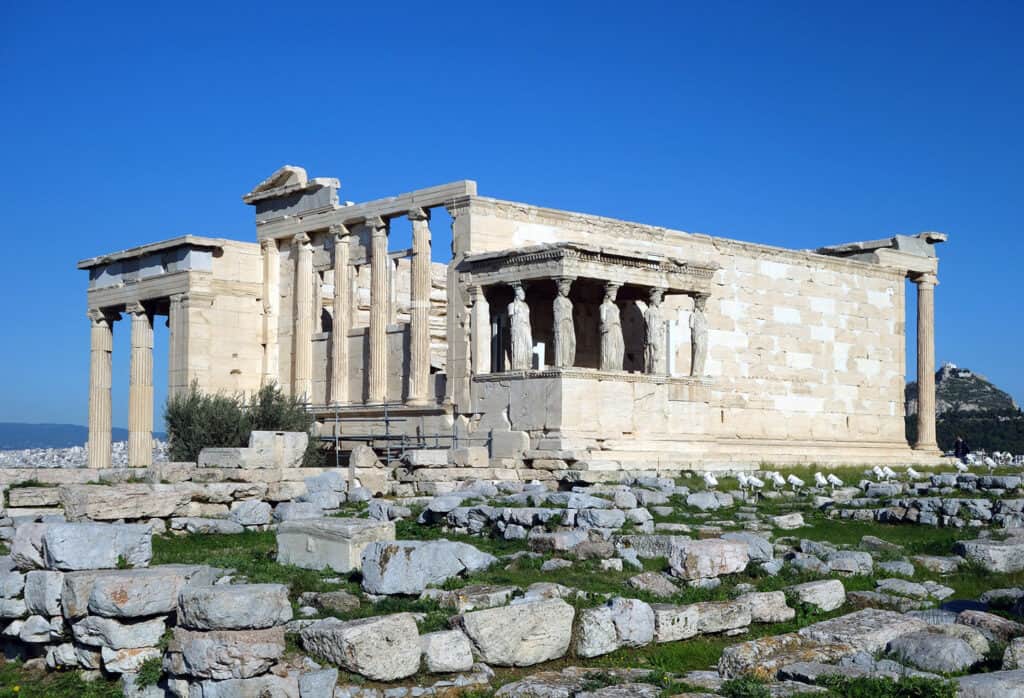
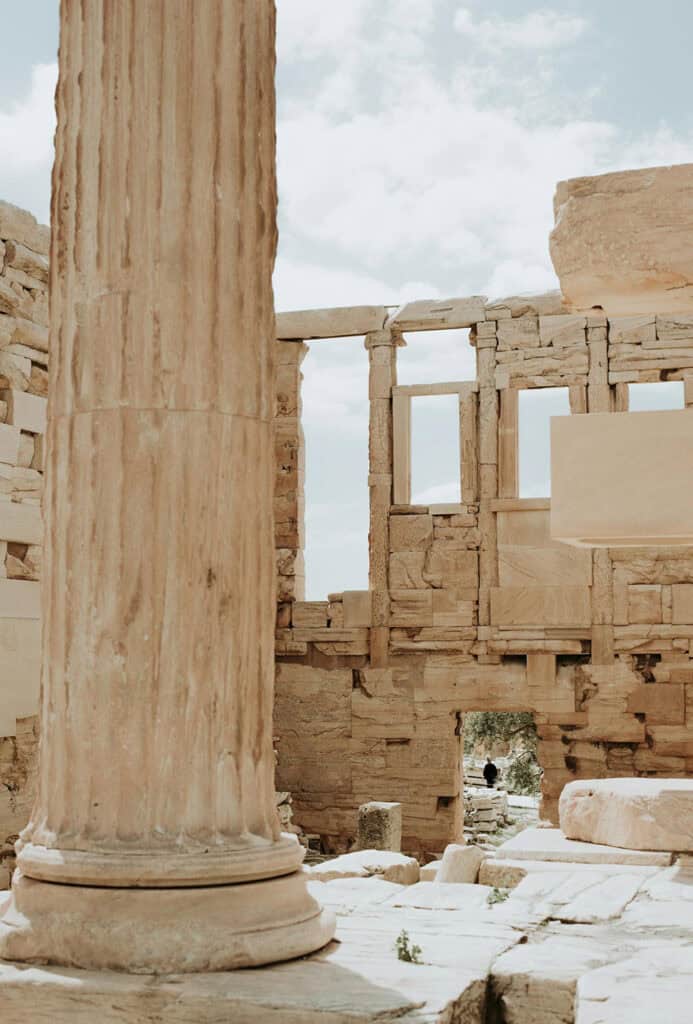

The Erechtheion, an ancient Greek temple on the north side of the Acropolis in Athens, was constructed in the 5th century BCE and celebrated for its distinctive design and architectural innovations. Notably, it features six Caryatids—columns sculpted in the form of female figures—and elaborate Ionic capitals adorned with intricate carvings. Dedicated to both Athena and Poseidon, the temple exemplifies the artistic and religious significance of ancient Greek architecture.
See Also Famous Buildings in Ancient Rome
5. Acropolis of Athens
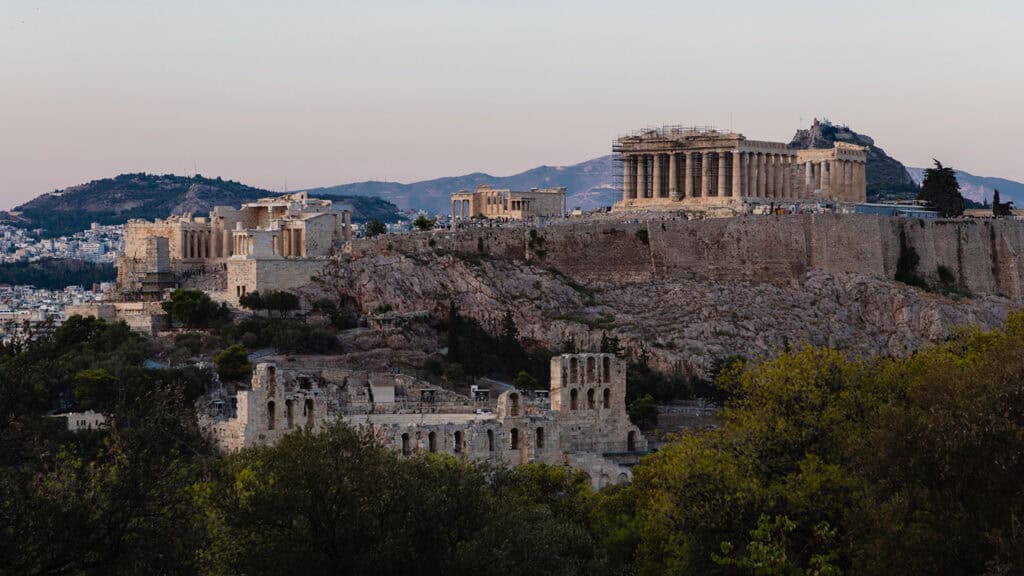

The Acropolis of Athens, located on a rocky outcrop overlooking the city, is one of the most famous ancient sites in the world. It features several temples, including the Parthenon, which was built in the 5th century BCE and is considered a masterpiece of Classical Greek architecture. The Acropolis is a symbol of ancient Athens and a testament to the skill and ingenuity of ancient Greek architects and builders.
6. Temple of Apollo at Delphi
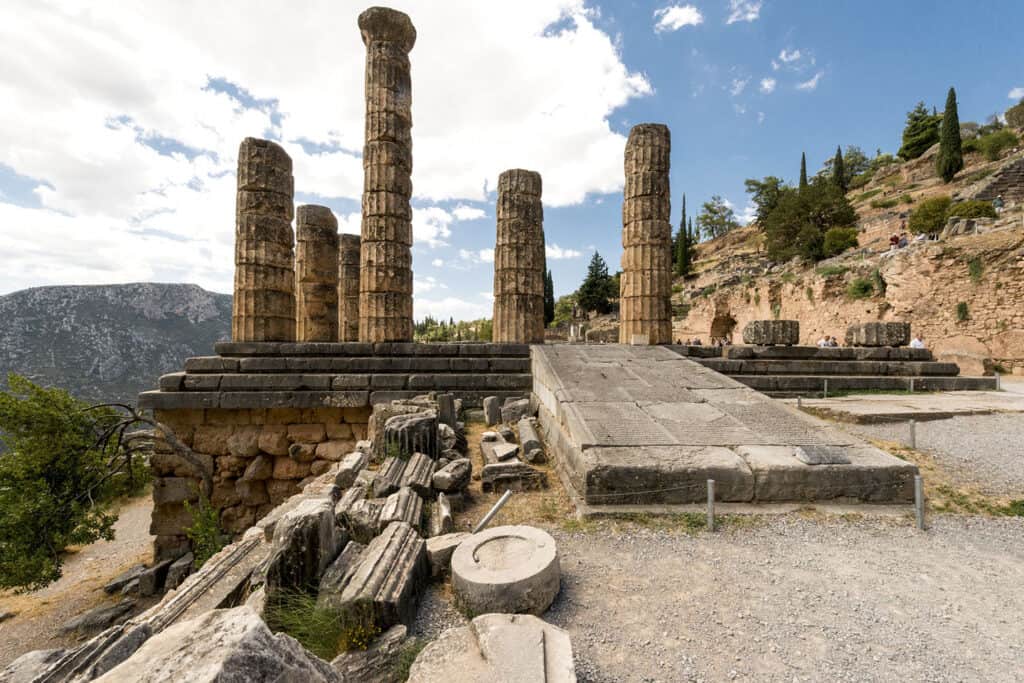
The Temple of Apollo at Delphi was a major religious center in ancient Greece and is notable for its Doric architectural style. The temple was built in the 4th century BCE and was dedicated to the god Apollo. Although the temple was destroyed by an earthquake in 390 BCE, some of its columns still stand today. The site is now a popular tourist destination and a UNESCO World Heritage Site.
See Also Roman VS Greek Architecture
Byzantine and Medieval Architecture
Greece features rich Byzantine and Medieval architecture renowned for its intricate designs and deep religious symbolism. As the Eastern Roman Empire evolved into the Byzantine Empire in the 3rd and 4th centuries AD, a distinct style emerged, shaped by Christianity becoming the official religion. This era saw the construction of churches, monasteries, and fortifications across Greece, all reflecting Byzantine artistry and spiritual importance.
7. Hagia Sophia, Thessaloniki
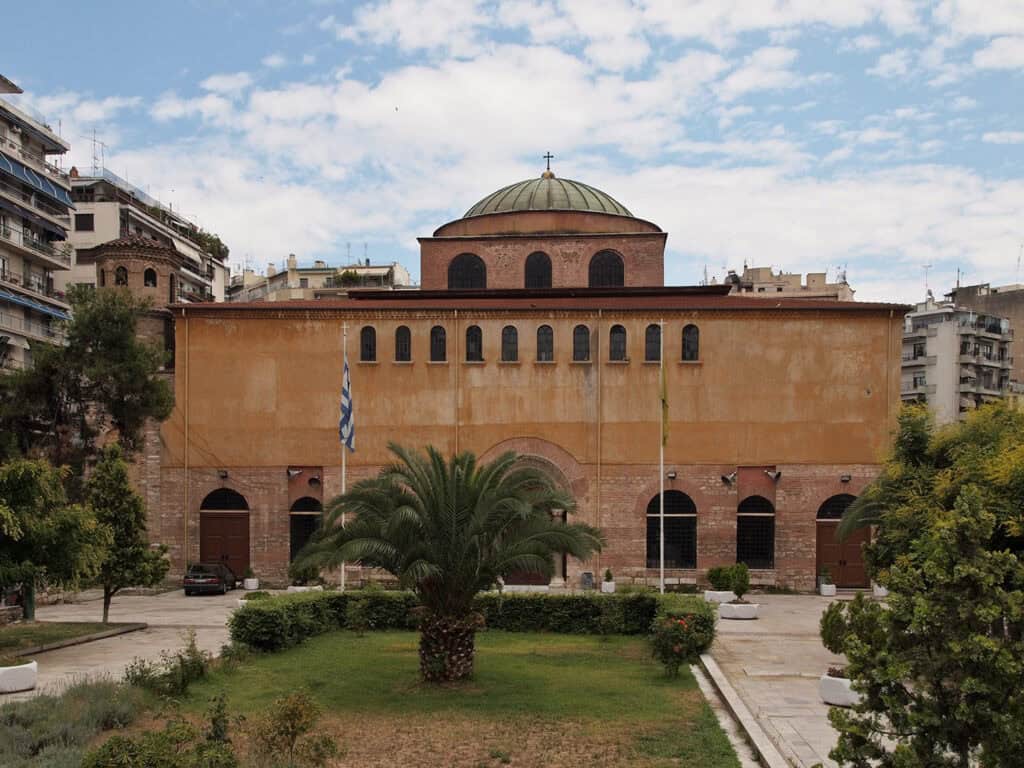

The Hagia Sophia in Thessaloniki, an 8th-century church, is famed for its stunning mosaics depicting biblical scenes and saints. Despite damage from earthquakes and fires over time, it has been meticulously restored and remains a premier example of Byzantine architecture in Greece, cherished for its beauty and religious significance.
Neoclassical Architecture (19th Century)
Neoclassical architecture emerged in the 19th century as a revival of classical styles, inspired by ancient Greek and Roman architecture. This style was used extensively in public buildings and monuments in Greece, as well as in other parts of Europe.
8. Zappeion
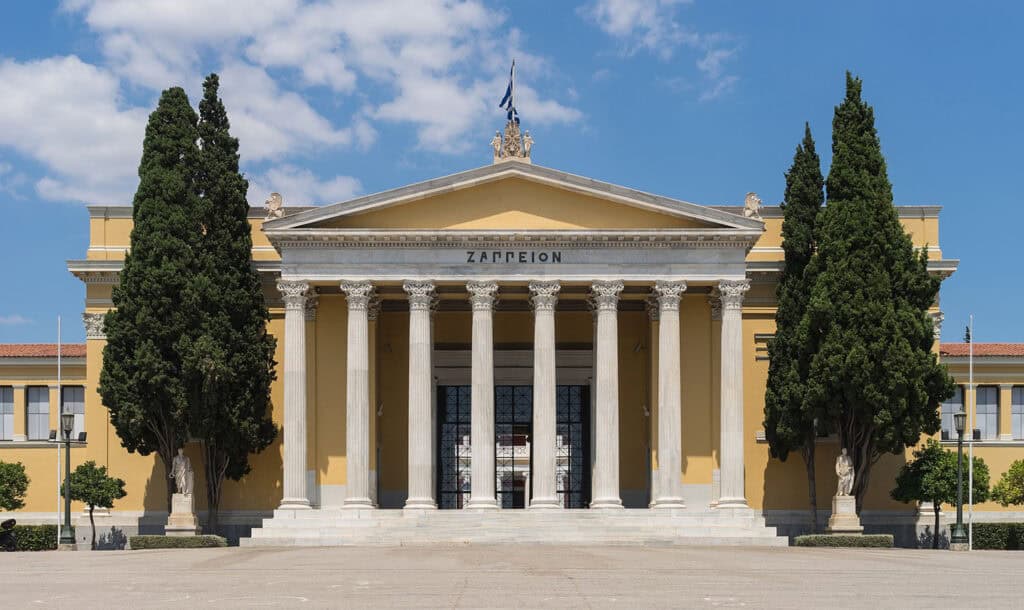
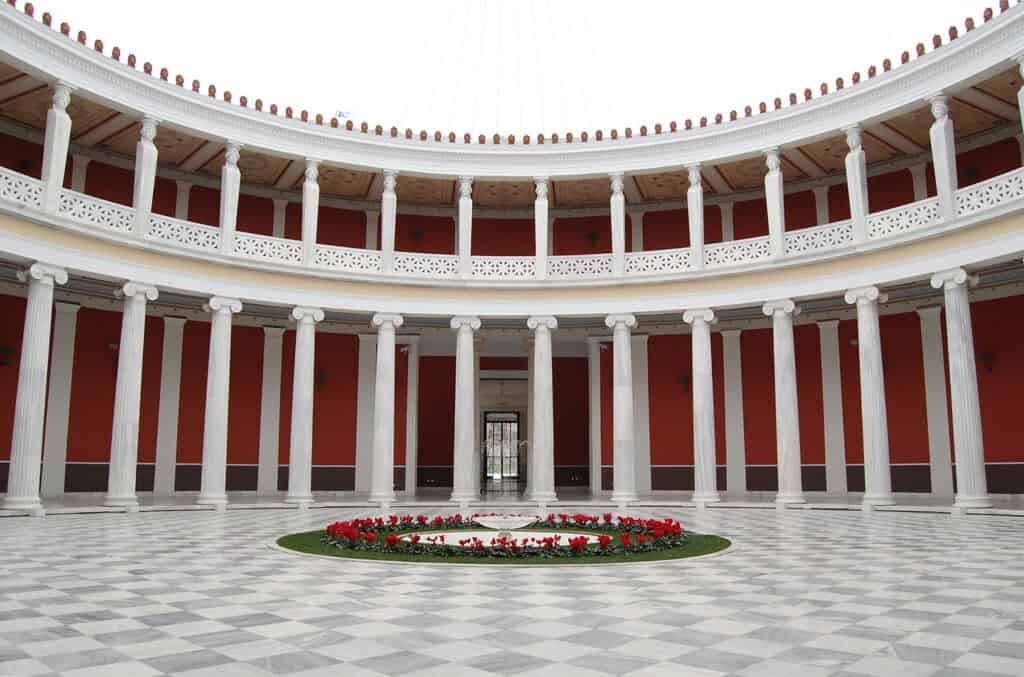
The Zappeion, situated within the National Gardens of Athens, stands as a prominent example of neoclassical architecture in Greece. Designed by Danish architect Theophil Hansen and completed in the late 19th century, it originally served as an exhibition hall. Characterized by a spacious central hall crowned with a glass roof and supported by Ionic columns, the Zappeion boasts an exterior adorned with sculptures and reliefs depicting themes from Greek history and mythology.
Today, the Zappeion continues to host a wide array of events such as conferences, exhibitions, and concerts, maintaining its status as an iconic symbol of neoclassical elegance in Greek architecture.
Modern and Contemporary Architecture

9. Athens Concert Hall (Megaron Moussikis)

The Athens Concert Hall, designed by architects Heinrich Keilholz and Anastasios Metaxas, opened in 1991. It is a modern building with a unique design that incorporates elements of ancient Greek architecture. The building has a large concert hall that can seat up to 2,000 people, as well as smaller halls and exhibition spaces.
10. Stavros Niarchos Foundation Cultural Center
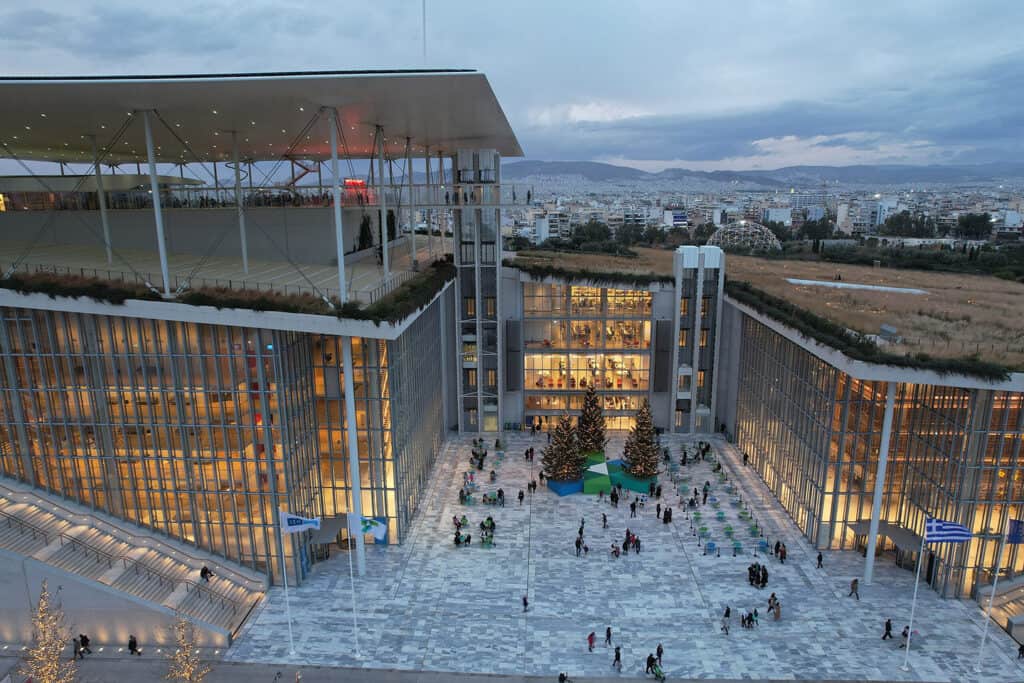
The Stavros Niarchos Foundation Cultural Center, designed by renowned architect Renzo Piano, opened in 2016. It is a modern complex that houses the National Library of Greece and the Greek National Opera. The building is located in a large park and features a unique design that incorporates sustainable elements.
See Also Italian Modern Architecture
Traditional Architecture in Greek Islands
Greek island architecture is known for its distinct style characterized by whitewashed buildings, blue-domed churches, narrow streets, and cubic structures. This architecture reflects the region’s history and culture, with each island having its unique architectural features influenced by local traditions and practical needs.
11. Santorini Architecture
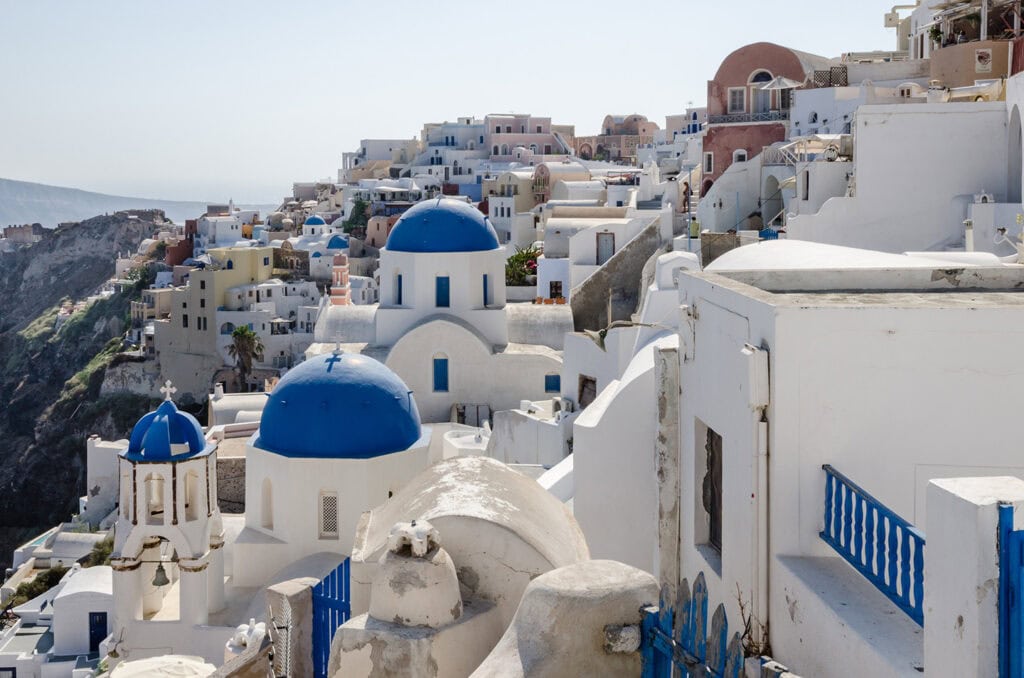
Santorini is one of the most famous Greek islands, renowned for its picturesque whitewashed buildings with blue domes. The island’s architecture is characterized by the use of abundant volcanic rock. The buildings are designed to withstand the strong winds that sweep across the island, featuring low-lying structures and flat roofs. Additionally, the buildings are painted white to reflect the sun’s heat, keeping the interiors cool.
Monasteries and Religious Buildings
12. Metéora Monasteries

Metéora Monasteries, nestled in central Greece, stand as awe-inspiring examples of medieval architecture. Perched atop natural sandstone rock pillars, these six monasteries were constructed between the 14th and 16th centuries by monks seeking refuge from the expanding Ottoman Empire.
Accessible only by precarious ladders or basket hoists in their early days, today they are a UNESCO World Heritage Site, celebrated for their Byzantine and Greek architectural blend. Adorned with intricate frescoes and colorful murals, and housing valuable religious artifacts, the Metéora Monasteries continue to captivate visitors with their spiritual ambiance and breathtaking mountain views.
Archaeological Sites and Museums
13. Acropolis Museum
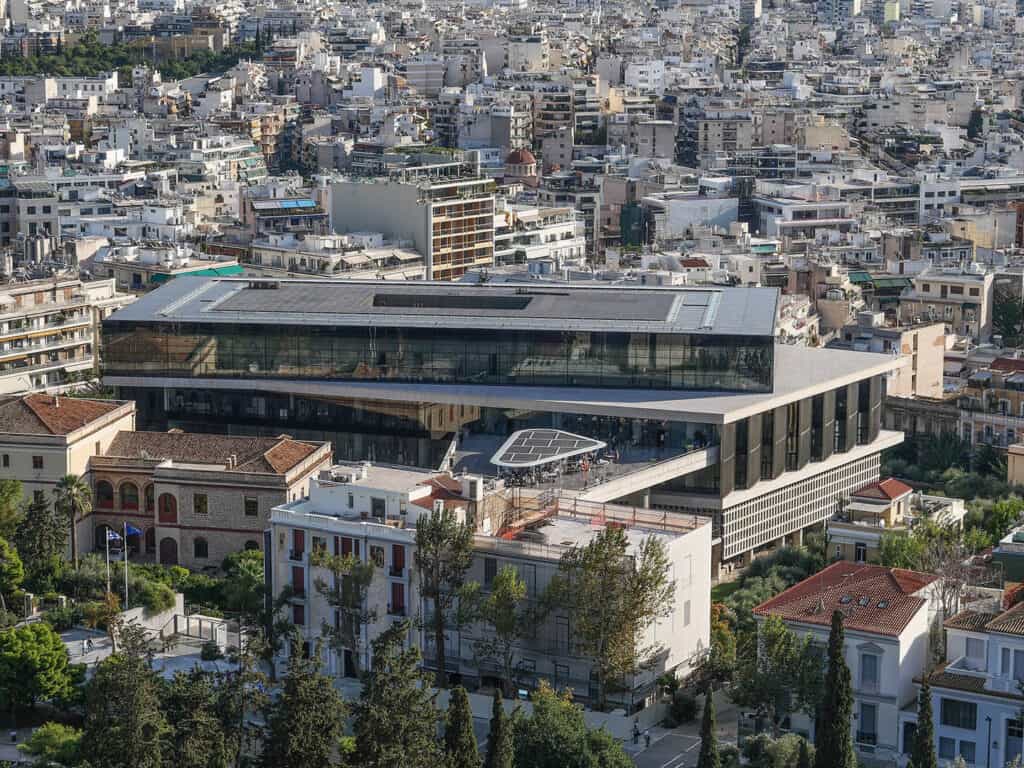
The Acropolis Museum in Athens is a pivotal destination for enthusiasts of ancient Greek architecture and art, showcasing the iconic Parthenon and other significant Acropolis structures. Its exhibits highlight intricate architectural features like roof trusses and decorative details. As one of Greece’s foremost museums, it exclusively houses artifacts from the Athenian Acropolis, offering a comprehensive narrative of this globally renowned site, bridging ancient and modern history.
14. National Archaeological Museum, Athens

The National Archaeological Museum in Athens, Greece, is a renowned repository of ancient Greek art and artifacts. It boasts an extensive collection spanning from the Neolithic era to the Roman period, featuring iconic pieces such as Mycenaean artifacts, Cycladic figurines, and sculptures from the Classical period. As the largest archaeological museum in Greece and a global center for ancient Greek art, it offers visitors a profound insight into the architectural styles and artistic achievements of the ancient Greeks.
See Also Greek Gods Statues
Minoan Architecture (Crete)
Minoan architecture stands as a captivating example of ancient Greek building styles, with the Palace of Knossos on Crete being a renowned illustration. Constructed circa 2000 BCE, this palace served as the focal point of the Minoan civilization.
15. Palace of Knossos

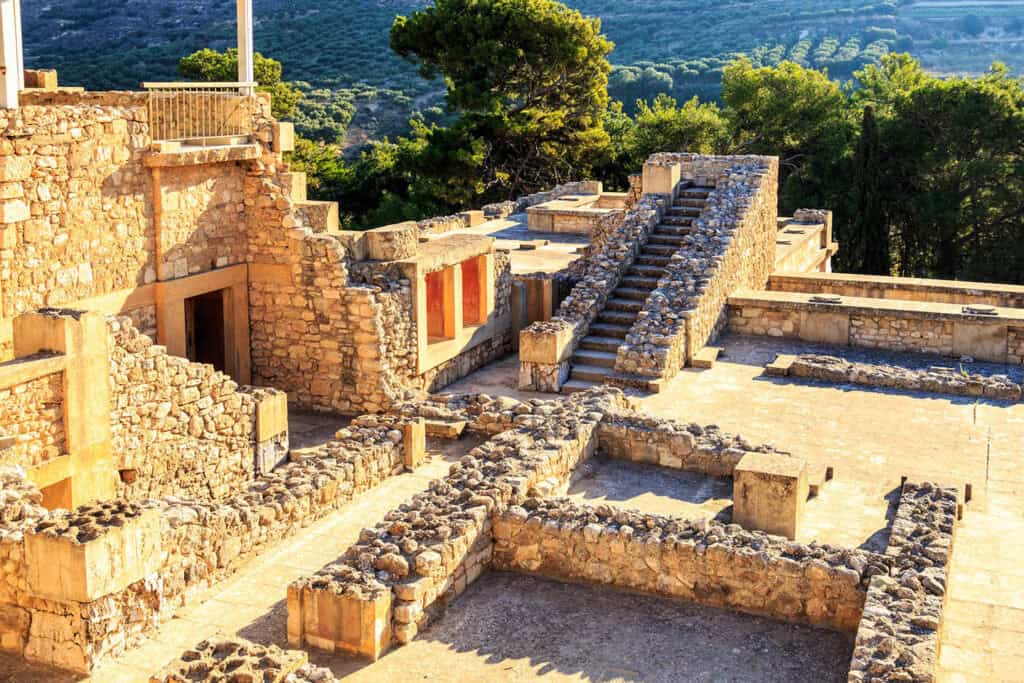
The Palace of Knossos, spanning approximately 20,000 square meters, is a monumental structure showcasing the sophisticated architecture of the Minoan civilization on Crete. Constructed primarily with mud brick and stone, it features a labyrinthine layout with numerous rooms, courtyards, and staircases, serving as both an administrative center and a ceremonial complex. Adorned with vibrant frescoes depicting scenes of daily life and intricate relief sculptures, the palace offers profound insights into Minoan artistry and culture.
Architecturally, it boasts tapered and fluted columns unique to the Minoan style, supporting its upper stories’ wooden beams. Strategically integrated light wells enhance natural light and ventilation throughout the complex. Notable circular rooms with conical roofs, known as “megaron,” further emphasize the palace’s architectural grandeur and historical significance within ancient Aegean civilization.
Ancient Greek architecture stands as a testament to meticulous craftsmanship and enduring beauty, from the Doric and Ionic temples to the iconic Parthenon and Temple of Apollo. These structures, adorned with intricate details and towering columns, reflect the cultural and artistic prowess of ancient Greece. Today, Greece continues to innovate with modern designs while preserving its rich architectural heritage, showcasing a blend of tradition and contemporary vision. Explore the essence of Greek architecture—from classical temples to modern marvels—as it continues to inspire awe and admiration worldwide.









